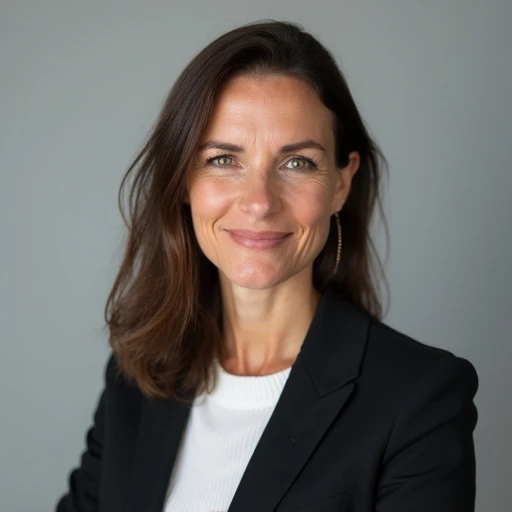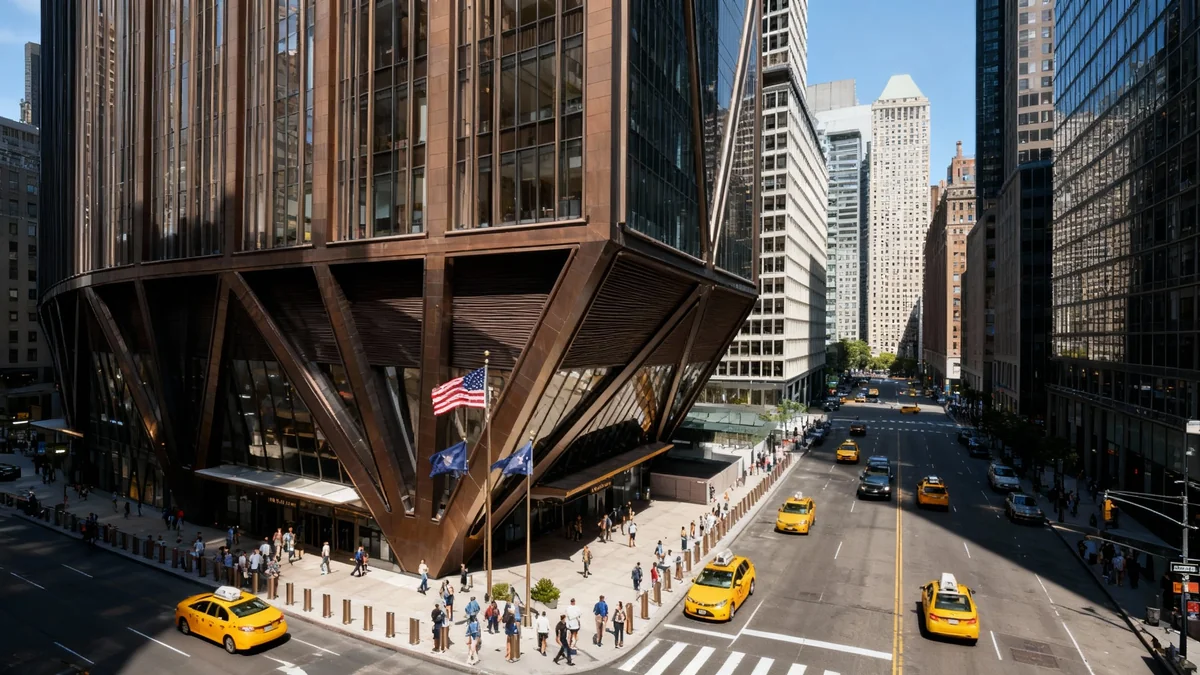Luxury fashion brands are moving beyond the runway and into the real estate market, developing high-end hotels and residential towers that allow customers to live inside their curated worlds. The latest to join this trend is Maison Margiela, which recently announced its first residential project in Dubai, signaling a growing strategy among couture houses to translate brand identity into physical living spaces.
This expansion from apparel to architecture represents a significant shift in the luxury market. Companies like Armani, Versace, and Bulgari are leveraging their brand power to command premium prices in competitive real estate markets like Miami, Dubai, and Marbella, creating new revenue streams and offering a deeper form of brand engagement.
Key Takeaways
- Maison Margiela is the latest luxury fashion brand to enter the real estate market with a residential project in Dubai.
- Fashion houses are creating branded hotels and residences to offer immersive lifestyle experiences and generate new revenue.
- Pioneers like Versace and Diesel's Renzo Rosso started this trend around the turn of the millennium.
- These properties translate specific brand aesthetics—from Armani's minimalism to Versace's opulence—into architectural design.
- Global hubs like Dubai, Miami, and Marbella have become hotspots for these high-fashion real estate developments.
From Couture to Condominiums: A New Business Model
The move by fashion labels into property development is a strategic evolution of their business models. What began as a niche experiment over three decades ago has become a mainstream strategy for extending a brand's influence and financial reach. By developing hotels and residences, these companies are no longer just selling products; they are selling a complete lifestyle.
This venture offers a powerful way to materialize a brand's philosophy in three dimensions. While a flagship store provides a glimpse into the brand's world, a residence or hotel invites clients to inhabit it. The late Giorgio Armani described this expansion as a natural continuation of his Armani/Casa design line, aimed at exploring his personal idea of living.
The financial incentives are substantial. Through licensing partnerships and co-development deals, fashion houses secure new revenue streams and enhance long-term brand visibility. In prime markets, branded residences often sell for a significant premium over comparable non-branded properties, driven by the allure of a prestigious name.
Premium by the Numbers
Branded residences can command price premiums of 25% to 35% on average compared to non-branded luxury properties in the same location. This premium reflects the perceived value of the brand's design, quality, and associated lifestyle.
Translating the Runway into Architectural Form
Each fashion-led real estate project is a direct reflection of the house's unique aesthetic. The design codes that define their clothing collections are meticulously transcribed into the language of architecture, from lobby decor to the finish on a faucet.
This commitment to brand identity is visible across different projects:
- Versace: The Palazzo Versace hotels in Dubai and Macau are defined by Italianate opulence. Medusa head motifs, intricate mosaics, and terrazzo floors echo the brand's Milanese palazzo.
- Armani: In contrast, the Armani Hotel inside Dubai's Burj Khalifa embodies minimalist calm. The design uses a palette of earthy tones and carefully selected materials to create a serene and harmonious atmosphere. This vision is being further developed in collaboration with architect Tadao Ando for the Armani Beach Residences.
- Bulgari: Known for its fine jewelry, Bulgari's hotels in Milan, Paris, and Shanghai emphasize refined craftsmanship. Designed by Antonio Citterio Patricia Viel, the properties feature hand-finished marble, silk wall coverings, and custom bronze details.
- Missoni: The brand's famous zigzag patterns and bold use of color are translated into structural elements and vibrant interiors at the Missoni Baia tower in Miami and the Missoni Resort Club in Mykonos.
The Pioneers of Fashion Real Estate
The trend was initiated by visionaries who saw real estate as the ultimate medium for brand expression long before it became widespread. Gianni Versace opened the first Palazzo Versace on Australia's Gold Coast in 2000. Even earlier, in 1990, Renzo Rosso, founder of Diesel, purchased and redesigned Miami Beach's Pelican Hotel, transforming it into a creative hub that reflected his brand's unconventional spirit.
A Global Phenomenon Centered in Luxury Hubs
The global hotspots for fashion-branded real estate are cities known for wealth, luxury, and international appeal. Developers in these locations partner with fashion houses to attract affluent buyers seeking unique and status-symbol properties.
Miami: A Canvas for Designer Living
Miami has become a key market for these projects. The Residences by Armani/Casa, a 308-unit tower in Sunny Isles Beach designed with architect César Pelli, successfully sold out, demonstrating the strong demand. Fendi followed with the beachfront Fendi Château Residences. More recently, Dolce & Gabbana announced 888 Brickell, a 90-story condo-hotel, while Diesel targeted a younger demographic with its industrial-chic Diesel Wynwood Condominium.
Dubai: The Epitome of Branded Luxury
Dubai's skyline is increasingly dotted with fashion-branded towers. Home to the first Armani Hotel, the city continues to attract major labels. The recent announcement of Maison Margiela Residences adds to a portfolio that already includes a Palazzo Versace and the upcoming Armani Beach Residences, solidifying the city's status as a capital of luxury living.
"These projects define the unmistakable style of each fashion house while transforming creative vision into built form."
- Renzo Rosso, Founder of OTB Group
The Future of Lifestyle Branding
The convergence of fashion and real estate is more than a passing trend; it represents the future of lifestyle branding. As consumers seek more immersive and authentic connections with the brands they admire, the opportunity to live, sleep, and socialize in a space designed by a favorite fashion house becomes the ultimate luxury experience.
Designers are also taking a personal role. The late Karl Lagerfeld's hotel in Macau, which opened posthumously, was a deeply personal project reflecting his unique East-meets-West aesthetic, complete with a library of books from his own collection. Similarly, Dolce & Gabbana's new projects in Miami and Marbella will be furnished entirely with pieces from their Dolce&Gabbana Casa line.
As more fashion houses enter the architectural space, the line between what you wear and where you live continues to blur. This evolution suggests a future where a brand is not just a label on a handbag, but the very framework of a person's home and lifestyle.





